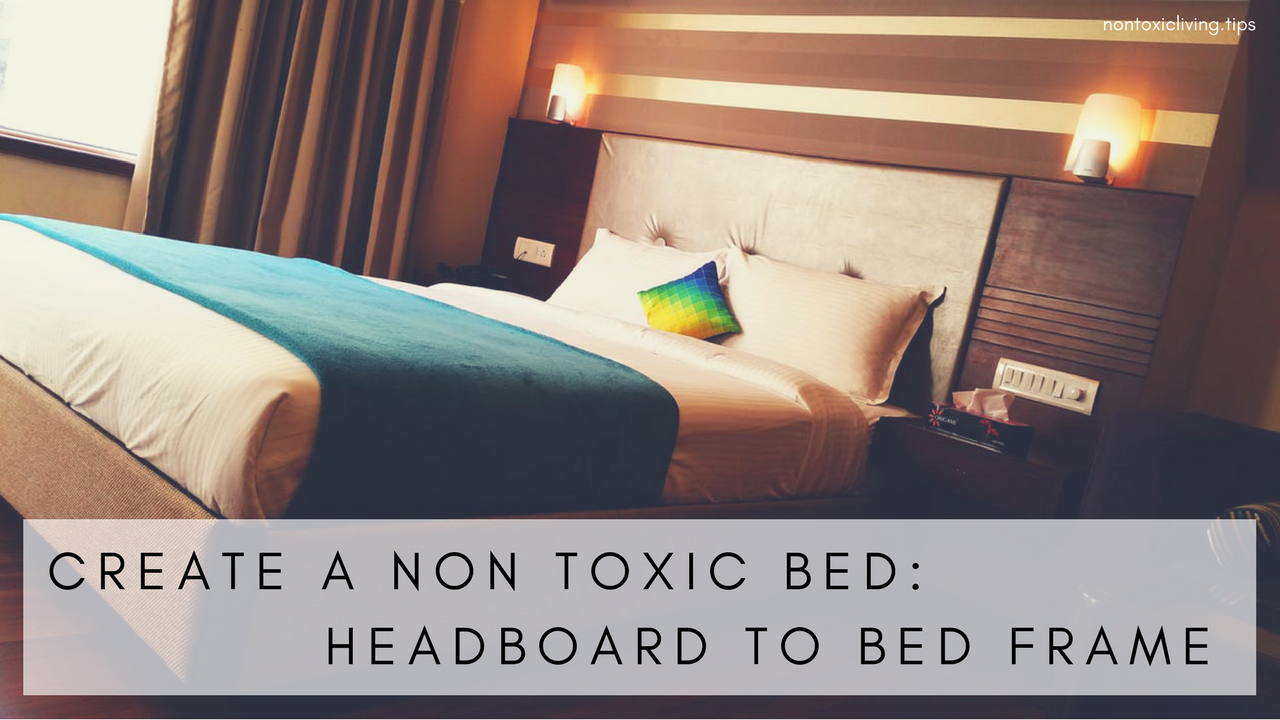
Create a Nontoxic Bed: Headboard to Bed Frame
Dec 13, 2017by Angela Cummings and Sophia Ruan Gushée
When looking for headboards and bed frames, consider nontoxic options. As the structure that surrounds your mattress, the headboard and bed frame are important considerations when detoxing your bedroom.
It would be demoralizing to invest in an organic mattress or bedding, and later learn that your headboard and bed frame are toxic!
Headboards and bed frames can affect the air quality in your bedroom by releasing Volatile Organic Compounds (VOCs). Those VOCs may be absorbed by your mattress and bedding (since they are porous surfaces) and release them back into the air again later(1). Moreover, you'll inhale them during your sleep.
So, what should you look for in a headboard or bed frame?
Consider these three considerations: wood type, wood finishes, and decorative fabrics that may surround your bed.
1. Wood Type
- Solid wood. Solid hardwood is the best wood to use when considering indoor air quality. Soft woods, such as pine, release natural VOCs that may still be less healthy or bothersome(2). Instead, consider hardwoods like oak, maple, walnut, and ash(3).
- Reclaimed wood. Headboards can be made of reclaimed wood that can have lead paint from previous use and finishes. If choosing a reclaimed-wood headboard, check to make sure that the paint does not contain lead.
- Composite wood. Composite woods include plywood, particle board, and pressed board varieties. These woods are made of resins, adhesives, and plastics that have been associated with health issues(4).
2. Wood Finishes
Wood furniture is often finished with a stain, paint, or top-coat finish (to seal wood). Standard finishes such as varnish may release VOCs(5) into the bedroom.
Instead, seeks finishes that contain:
- no- or low-VOC
- no HAPs, or Hazardous Air Pollutants
- no toxicants of concern on the Material Safety Data Sheet (MSDS).
Even better, find products that limit Semi-Volatile Organic Compounds (SVOCs)(6) as well. These products are more often found in healthy building or green building stores. Also, remember that solid wood can be sealed with linseed oil.
To learn more about healthier paints, read When Painting, Planning Pays Off.
3. Decorative Fabrics
Headboards are sometimes upholstered with fabric for decoration or can have a full fabric slip cover. This fabric may contain chemicals stemming from any, or each of, three decisions: the fabric type, color dye, and fabric finish. If you choose a headboard with fabric, choose those made with natural fiber materials with the least amount of dyes and finishes.
To learn more about healthier fabrics, read Safer Textile Materials to Detox Your Home.
Create a healthy sleep environment by buying a nontoxic bed frame and headboard to accompany your organic mattress and bedding. This holistic approach is a significant step in detoxing the entire bedroom!

Enroll in the D-Tox Academy to detox your home and life at a pace that’s comfortable for you.
The D-Tox Academy gives subscribers access to specific brands of products, and tips for how to use and maintain products. The academy includes short videos and check lists that are helpful when making healthier changes.
References
(1) Environmental Science and Technology
(2) Earth Data
(3) National Wood Flooring Association
(4) A to Z of D-Toxing Works Cited Part 2
(6) US EPA
Stay connected with nontoxic lifestyle news and updates!
Receive our free Ruan Living Nontoxic Cleaning Guide when you join our email list.
Don't worry, your information will not be shared.
We hate SPAM. We will never sell your information, for any reason.






